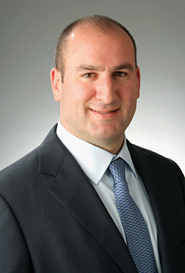Looking to raise its profile in U.S. equities, Canadian-based BMO Capital Markets has expanded its research and trading departments with the addition of almost two dozen hires.

The first step at BMO was combining its research teams in Canada and the U.S., where the firm had a small presence. Joining the two groups lets BMO analysts better focus on their sectors and is more efficient for the firm, company executives said.
All the new hires have been in the U.S., all in research sales and trading. BMO plans to upgrade its U.S. presence on the back of its research.
For decades, according to Jack Blackstock, BMO’s co-head of equity research, the firm has had a strong research presence. BMO acquired Nesbitt Thomson in 1987 and later merged it with Burns Fry in 1994. Blackstock will guide the expansion with help from Alan Tannenbaum, BMO’s head of U.S. equity sales.
"I’m charged with helping us build a U.S. presence, with Alan, where there wasn’t one before," Blackstock said. "Our Canadian research and equities departments have been high profile for decades; The U.S. businesses haven’t."
As always, research leads the way for trading, Tannenbaum added. BMO is committed to having a strong research product, which is "the basis of our relationship with the buyside. It’s also critical that we have a strong trading capability," he said.
A number of international firms have their eye on U.S. equities and have been expanding here. Firms, such as Japan’s Nomura, Australia’s Macquarie, the U.K.’s ICAP and France’s Societe Generale have all made efforts to expand their research and trading in the U.S. They recognize that they cannot call themselves a global firm without having a significant U.S. presence.
And this isn’t BMO’s first foray into the U.S. In April 2003, BMO, as the Bank of Montreal, bought the boutique New York investment bank Gerard Klauer Mattison for $30 million in an all-stock transaction. The goal was to provide research on U.S. companies to its Canadian clients.
The Strategy
Before BMO could rebuild, upgrade and expand its U.S. presence, it knew it needed to change the way it delivered its bread-winner: research. Up until 2008, the bank operated its research departments in the U.S. and Canada separately.
In 2008, it combined the two groups into one, Blackstock said, with some Canadian analysts covering U.S. firms and vice versa. This has made BMO’s content delivery to both markets more efficient, he added.
BMO has 31 analysts within the U.S. It has another 37 in Canada. The firm covers about 930 publicly traded companies. In the U.S., it covers 515, a number that it believes will increase with new hires.
Blackstock characterized BMO’s research coverage strategy as agnostic, in terms of the chosen industries. The firm is more interested in having the best talent, rather than covering any particular sector.
As a smaller research department, it doesn’t need to cover everything, Blackstock said. But BMO must have enough diversity in its product offering so that it’s relevant to a broad swathe of clients.
"Beyond that, we look at things that are relevant to our clients," Blackstock said. "We don’t want to have the best ice cream store in the Arctic Circle; we want to be somebody who’s providing research in the areas where people have a lot of interest."
Over the past 18 months, the new faces have grown to make up about one quarter of Blackstock’s department. This includes virtually all of his technology coverage in the U.S. The firm decided to build out its technology sector because it’s almost one third of the market cap and one third of U.S. trading volume, Blackstock added.
Trading has also seen an expansion, said Tannenbaum, adding that this has been the story for the last year, or so. BMO’s U.S. trading effort started with 40 people and has grown to 50. The goal is 60. It hired senior people from UBS, JPMorgan, Bank of America Merrill Lynch and Barclays, Tannenbaum said.
BMO plans to offer algorithms to clients, but is unclear whether they will be an in-house or white-label product. The firm offers program trading and commits a "significant" amount of capital to its customer base of long onlys and hedge funds, Tannenbaum said. It’s also built out its flow options and derivatives businesses over the course of this year, and has made significant investments in its equity finance and prime brokerage businesses.
To be successful, it’s critical for BMO to succeed with the top 200 U.S. institutional investors, he added, which drive the lion’s share of the business. The firm’s objective is to move up those broker lists over the next three to five years.
"We do have strong relationships with a number of very important institutions," Tannenbaum said. "We’ve done well on broker lists at a number of key institutional investors here in New York, Boston and on the West Coast for many years."
Tannenbaum, a former global head of cash equity sales at Lehman Brothers, is one of four new senior management hires slated to lead the expansion of the firm’s U.S. cash equities business. The three others are Rick Joyce, head of U.S. equity sales trading; Will Bertsch, head of U.S. equity facilitation trading; and Sean MacKenzie, head of U.S. equity electronic trading.
BMO is hoping the additional staff and change in strategy will boost trading results. According to the firm’s third-quarter filings, trading revenues across the company were down 42 percent, year over year. They were down 36 percent in this year’s third quarter compared to the previous quarter. Among other reasons, the filing said that the lower revenues were due to "a more challenging trading environment."
BMO has equity sales desks in 11 cities around the globe: in New York, Chicago, Boston, San Francisco, Houston, Toronto, Montreal, Vancouver, London, Paris and Zurich.



